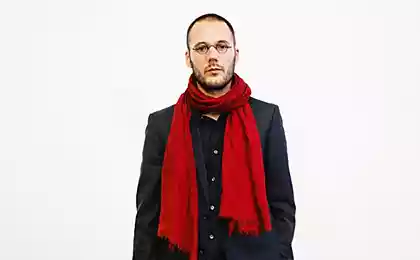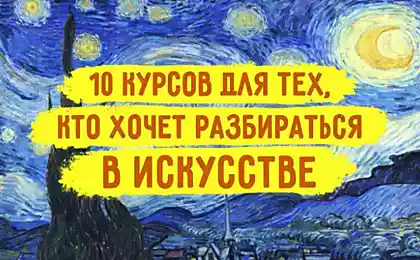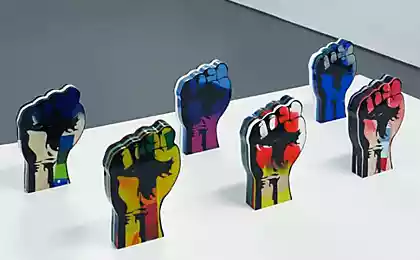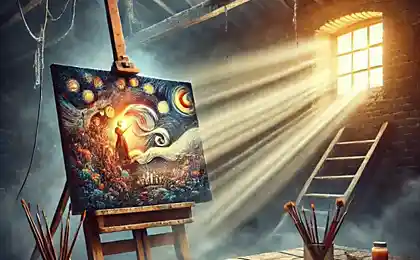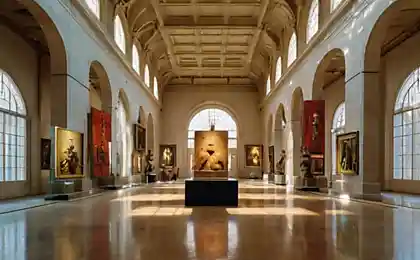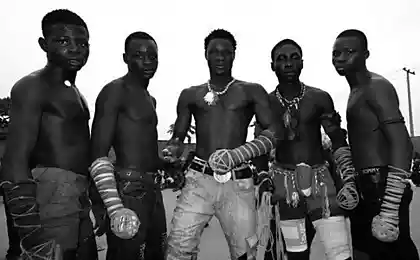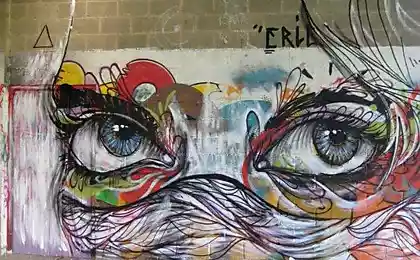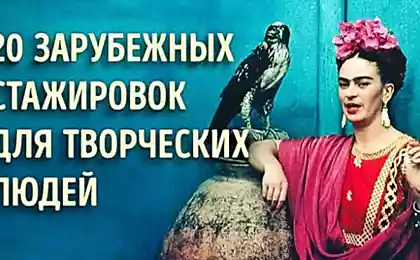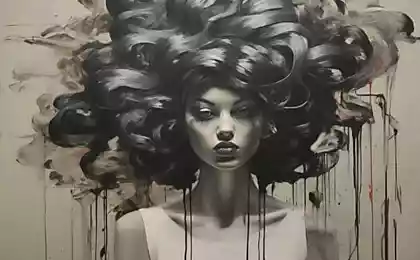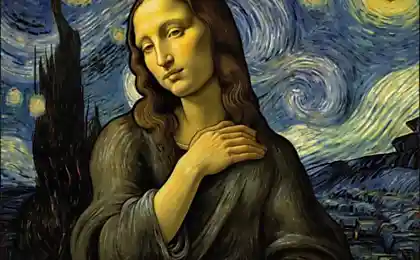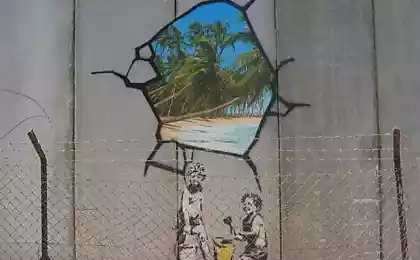2186
10 of the most unusual forms of contemporary art
Contemporary artists often use a very unusual sposoby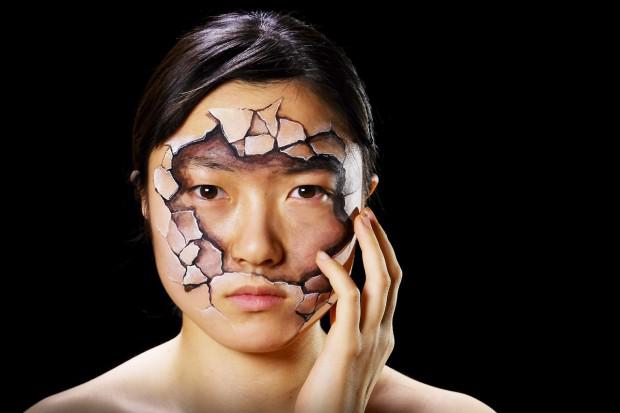
art there almost as long as humans. But the ancient artists involved in cave paintings, could hardly imagine what strange forms can take modern art.
1. anamorphoses
Anamorphosis - a technique for creating images, fully see and understand that you can only look at them from a certain angle, or from a certain location. In some cases, the correct image can only be seen if you look at the mirror image of the painting. One of the earliest examples of anamorphosis demonstrated by Leonardo da Vinci in the 15th century. Other historical examples of this art form appeared in the Renaissance.
For centuries, this technique has evolved. It all started with three-dimensional images produced on plain paper, and gradually came to street art, when artists imitating different holes in the walls, or cracks in the earth.
But the most interesting contemporary example - anamorphic print. Once students Joseph Egan and Hunter S. Thompson, studying graphic design, was applied to the walls in the corridors of his college distorted texts that could be read, but if you look at them from a certain point.
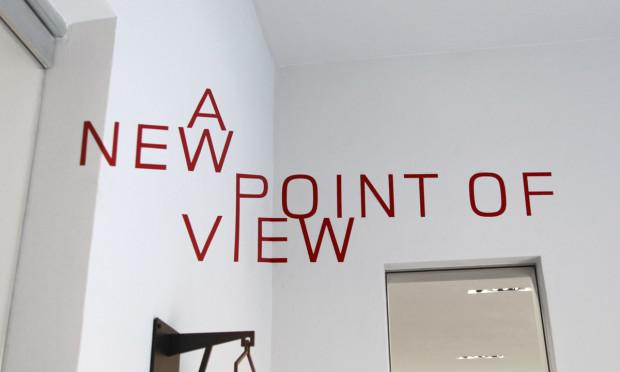
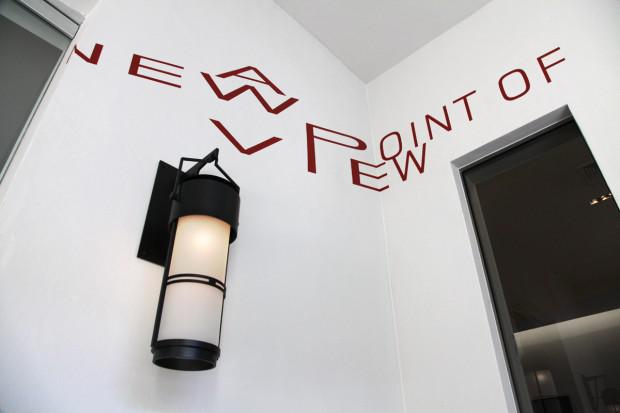
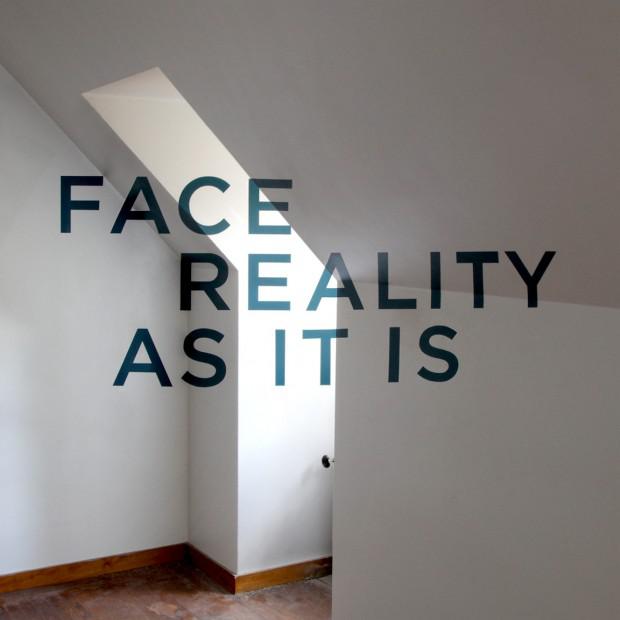
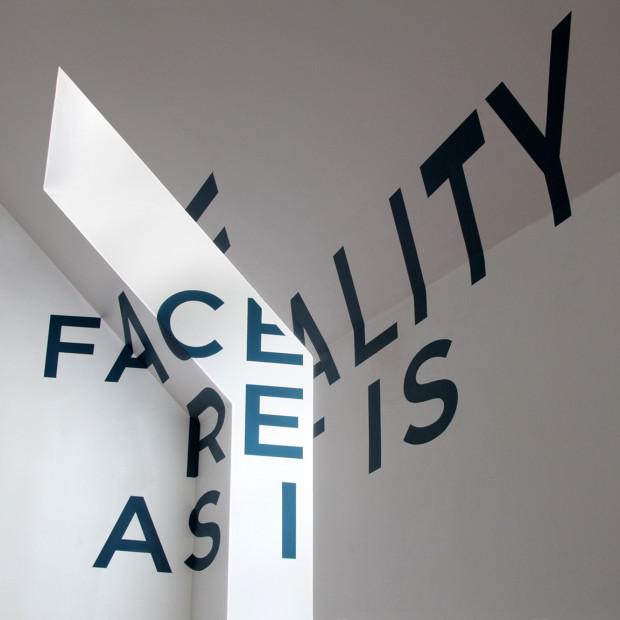

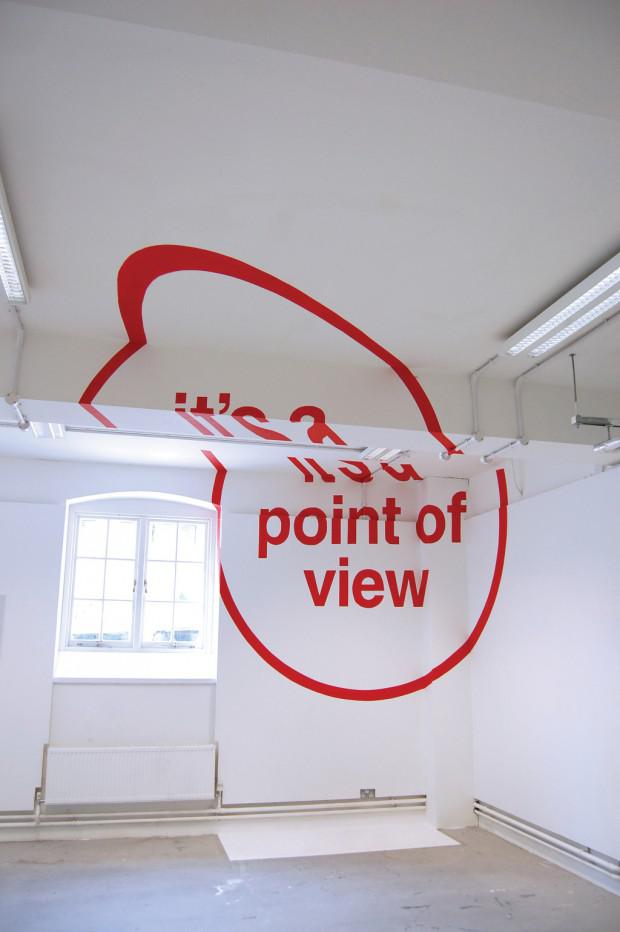
2. Fotorealizm
Since the 60s the movement fotorealistov sought to create an extremely realistic images that were almost indistinguishable from real photos. Copying minute details recorded by the camera, artists fotorealisty sought to create "paintings of life».
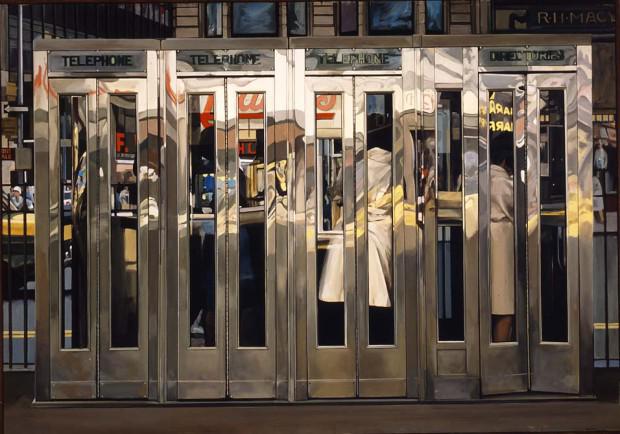
Another movement known as the super-realism (or hyper-realism), covers not only painting, but also sculpture. Also, this movement is strongly influenced by modern pop art culture. But while the pop-art images of everyday trying to remove from the context, photorealism in contrast, focuses on images of normal, everyday life, reconstituted as accurately as possible.

The most famous artists-fotorealistam include Richard Estes, Audrey Flack, Chuck Close and the sculptor Douay Hanson. The traffic is very ambiguously perceived by critics, who believe that there is clearly a mechanical skill prevails over the stele and ideas.

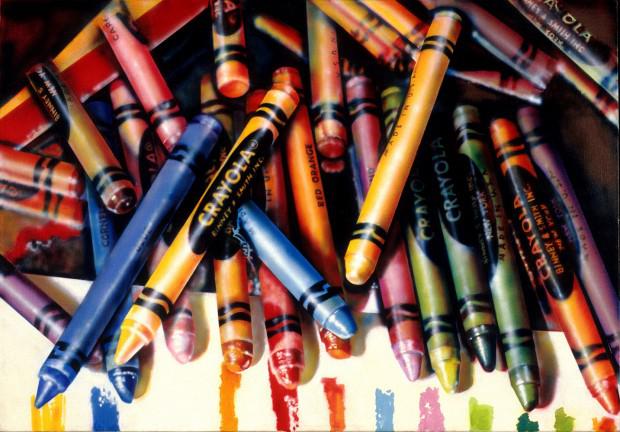
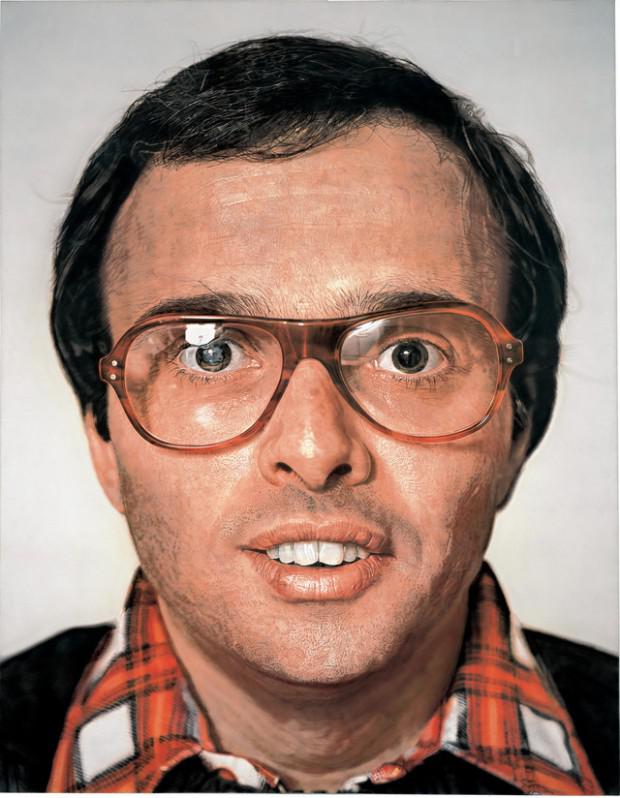
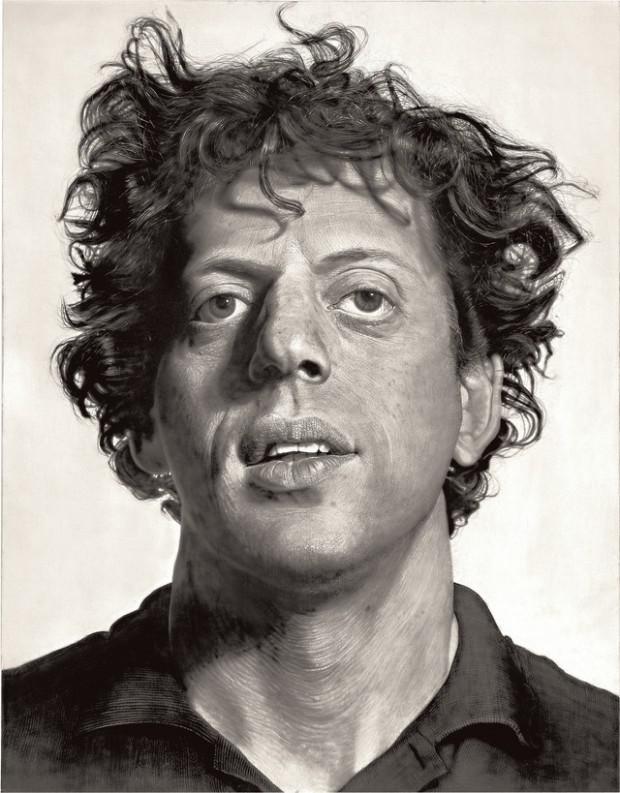
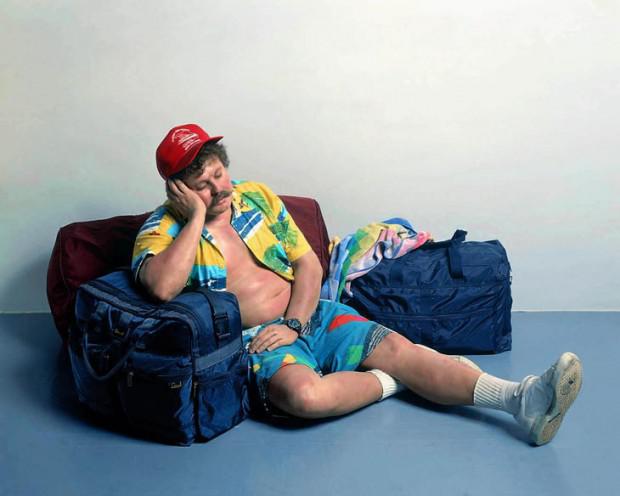
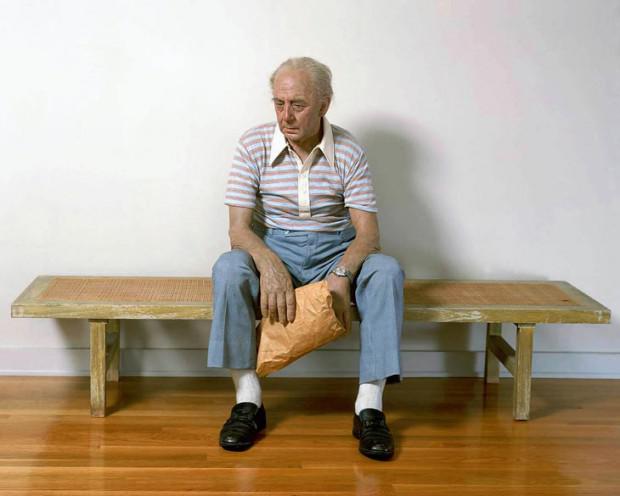
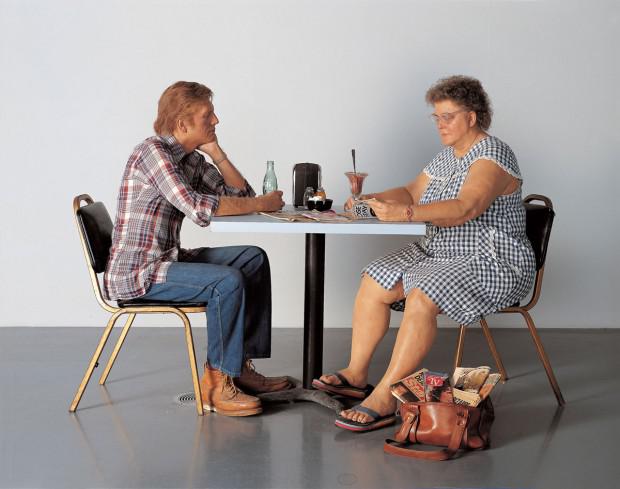
3. Drawing on dirty mashinah
Drawing on the dirt accumulated on have not washed the car, too, is considered art, the best representatives of which seek to portray the somewhat more mundane kinds of labels "wash me».
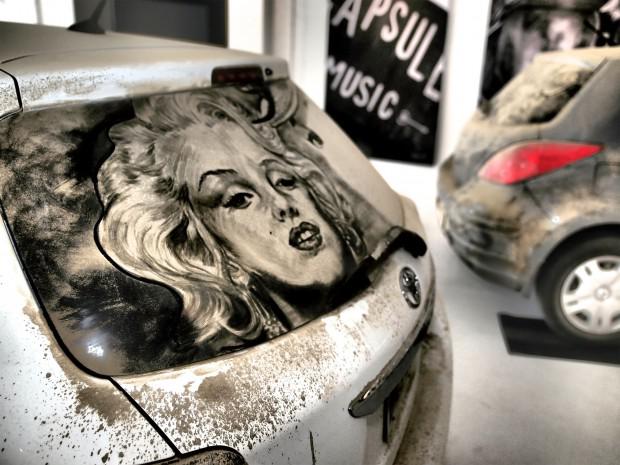
52-year-old graphic designer named Scott Wade became very famous because of its wonderful drawings that he created using the dirt on the glass machines.

But the artist began with the fact that he used as a canvas thick layer of dust on the roads of Texas, on the road, he drew various cartoons and he created them with your own fingers, nails and small twigs.

Currently, he uses special paint brushes, through which creates a wonderfully entertaining and complex picture. Wade gradually began to show in various art exhibitions, as it began to recruit advertisers to he demonstrated his skill at their events.
4. Use of body fluids in iskusstve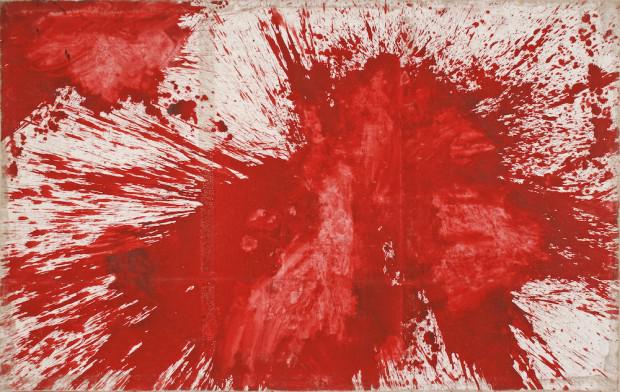
This may seem strange, but there are many artists who use their work in a body fluid. Did you have somewhere read about it, but most likely, it was just the tip of the iceberg of this disgusting.
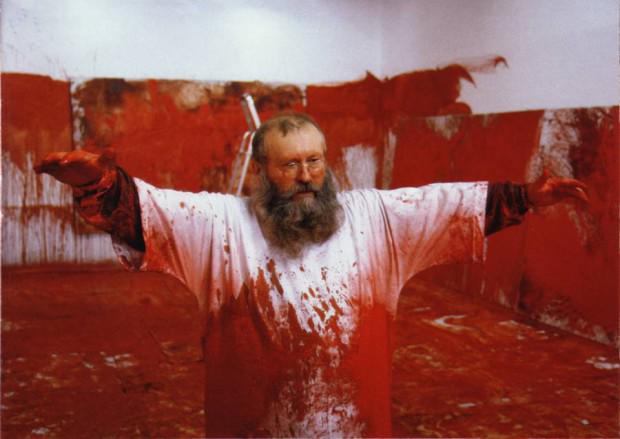
For example, the artist Hermann Nitsch of Austria uses in his work his own urine and blood of a large number of animals. These preferences are having him as a child who came to the Second World War, and these preferences over the years of controversy, it was even a few trials.
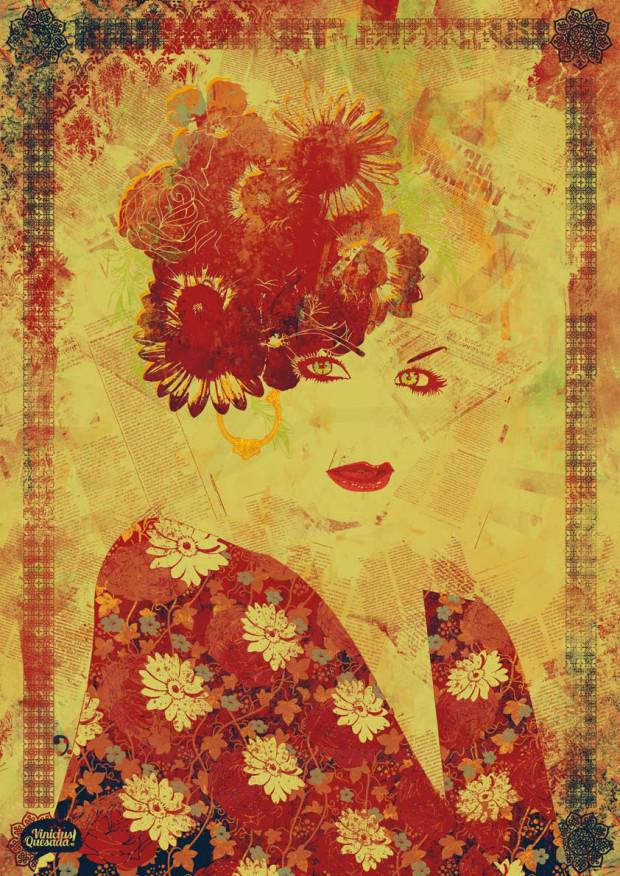
Another artist from Brazil named Vinitsius Quesada works with his own blood, and does not use animal blood. His paintings, with painful shades of red, yellow and green, convey very dark, surreal atmosphere.

5. Drawing parts of his own body
Not only artists, using bodily fluids, are currently on the rise. Also gaining popularity use of parts of his own body as a brush. Take, for Tim Patch. He is better known under the pseudonym "Pricasso", which he took after the great Spanish artist Pablo Picasso. And yet it is known that uses its own penis as a brush. This 65-year-old Aussie did not love himself or what limit, so that in addition to the penis is also used to draw the buttocks and scrotum. This unusual case patch has been doing for more than 10 years. And its popularity is growing year by year.
And Kira Ayn Varsedzhi uses its own breasts to draw abstract portraits. While it is often criticized, it is, nevertheless, remains a full-fledged artist who works every day (she also wrote the picture and without the use of a breast).
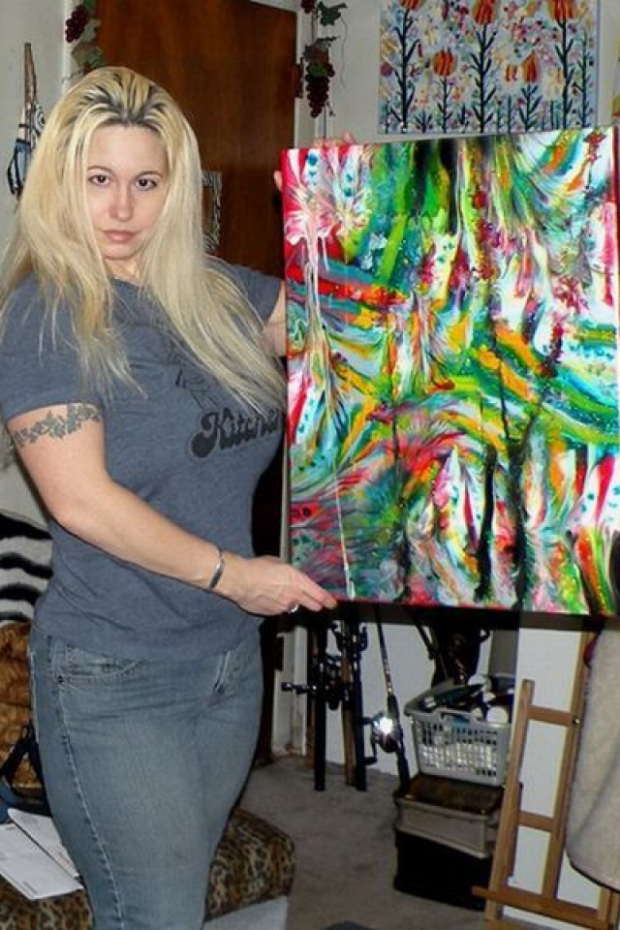
Other artists in this strange art is Ani K painting language, and Stephen Marmer, a school teacher, painting his own buttocks.
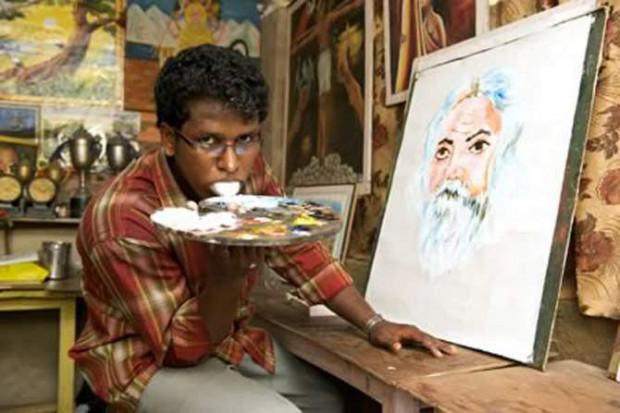
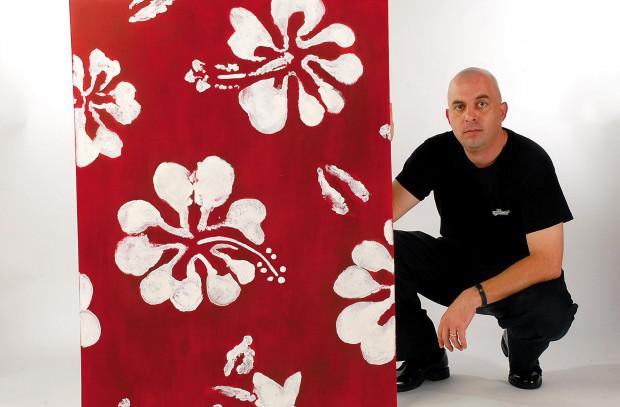
6. Reverse three-dimensional izobrazheniy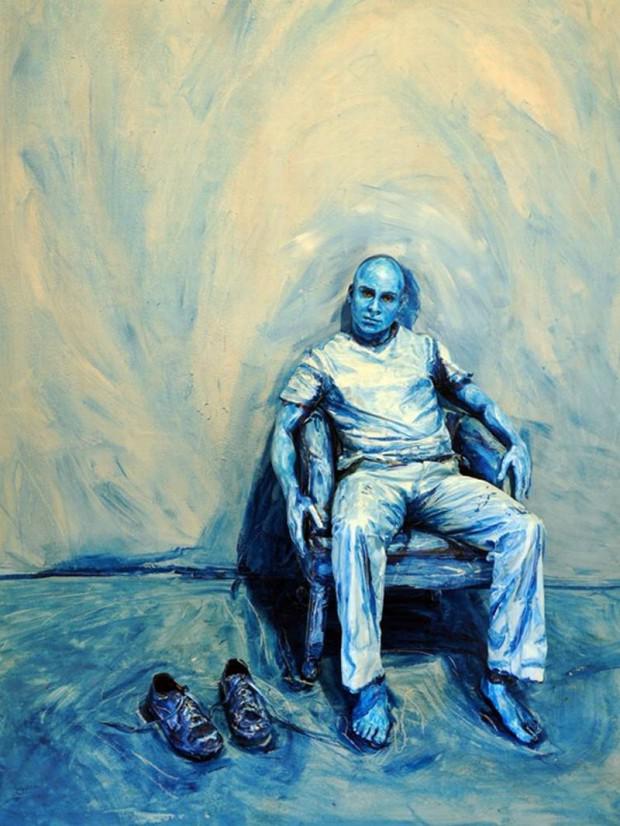
While anamorphoses tries to make two-dimensional objects look like three-dimensional, three-dimensional images of the reverse tries to make the three-dimensional object looked like a two-dimensional drawing.
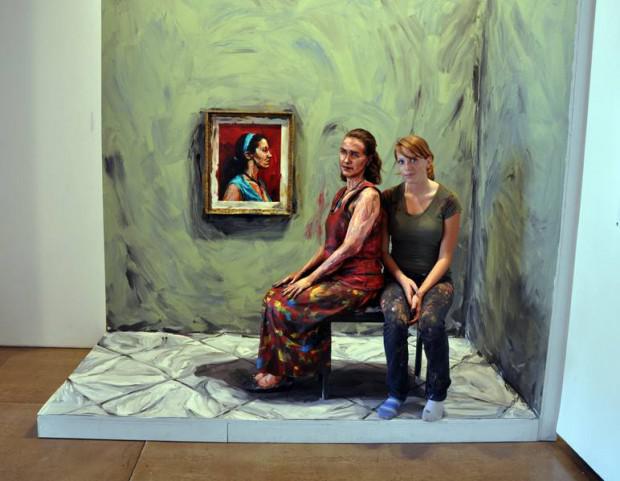
The most prominent artist in this field is Alex Meade from Los Angeles. In its work, Mead uses non-toxic acrylic paint, with which it makes its assistants to be like inanimate two-dimensional picture.

This technique Mead began to develop as early as the year 2008, and it was presented to the public in 2009, the year.
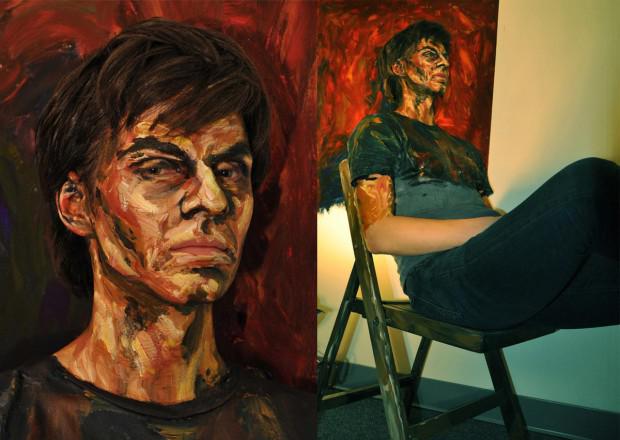
Mead Works, it is usually the man sitting against the wall and painted in such a way that the viewer the illusion that before him - the usual canvas with a conventional portrait. To create such a product, it can take several hours.
Another important figure in this field is Cynthia Greig, artist and photographer from Detroit. Unlike Mead, Greig not use in humans, and ordinary household objects. She covers them with white paint and charcoal to it by the look flat.
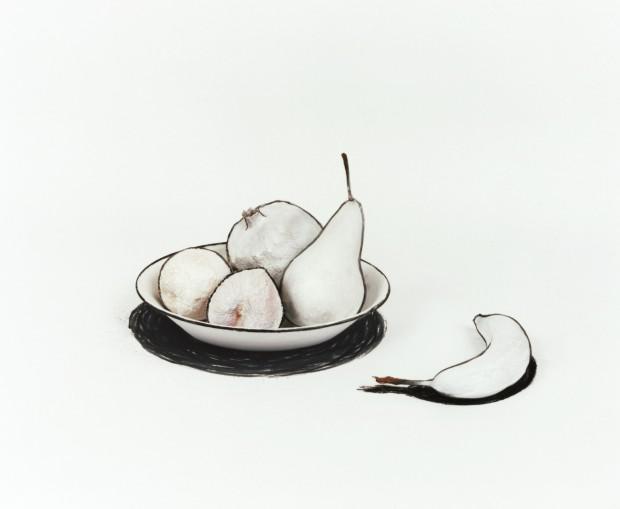
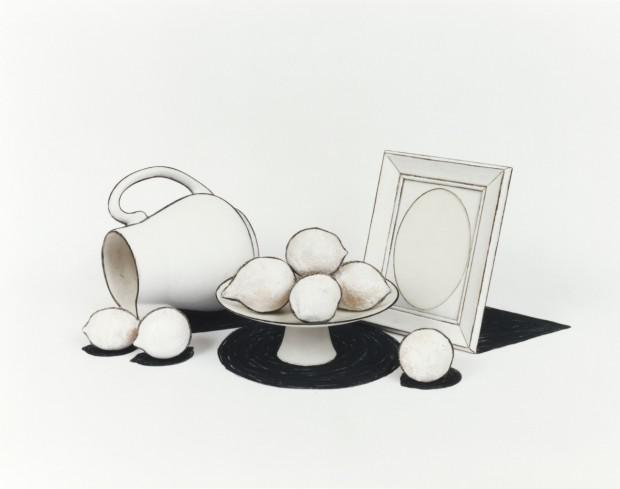
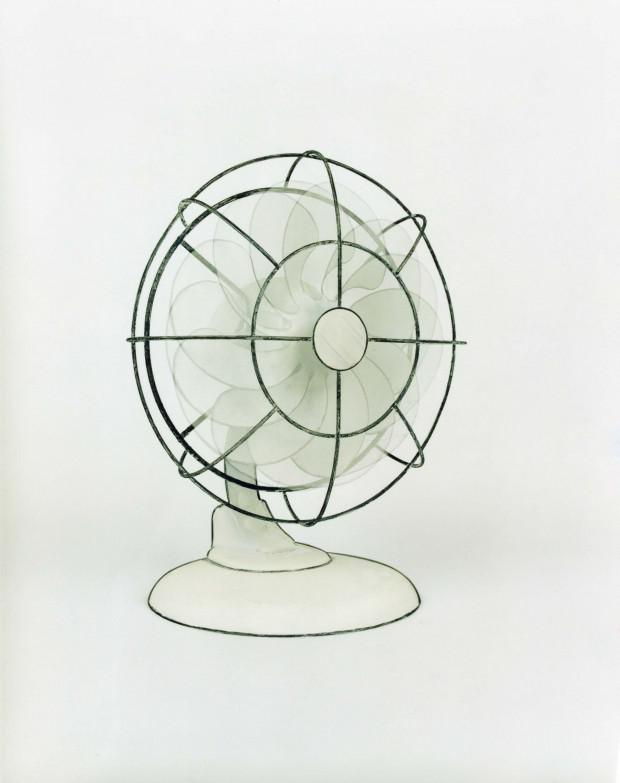
7. Shadows in iskusstve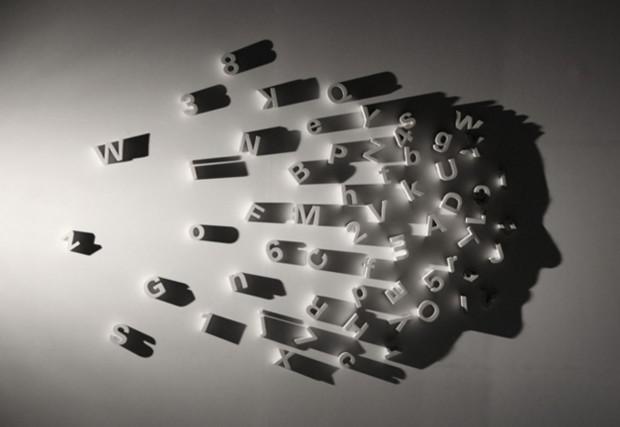
The shadows are fleeting in nature, so it's hard to tell when people first began to use them to create works of art. But today's "shadow artists" reached unprecedented heights in the use of shadows. Artists use a careful positioning of different objects to create beautiful images of shady people, objects or words.
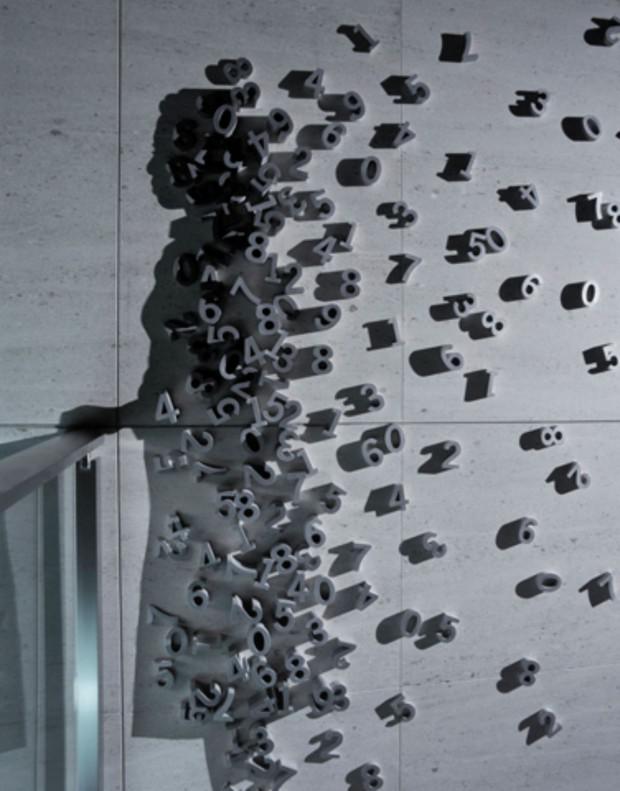
The most notable artists in this area - Kumi Yamashita and Fred Erdekens.


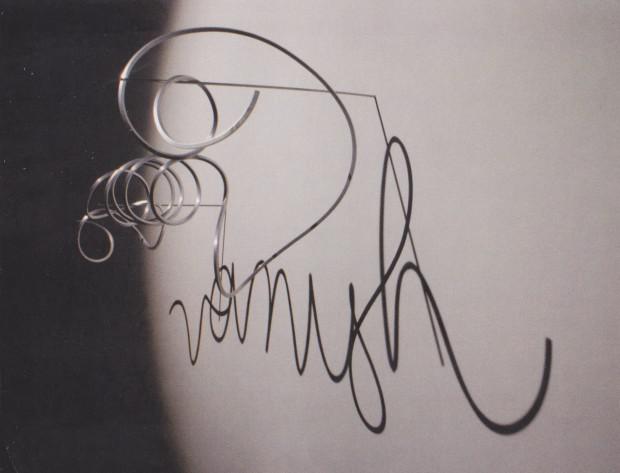

Of course, the shadows a few terrifying reputation, and many "shadow artists' use in their work the theme of horror, devastation and urban blight. This famous Tim Noble and Sue Webster. The most famous of the product called "Dirty white trash", in which a bunch of garbage casts a shadow on the two people who drink and smoke. In another study, visible shadow of a bird, perhaps a shadow raven pecks couple of severed heads impaled on stakes.
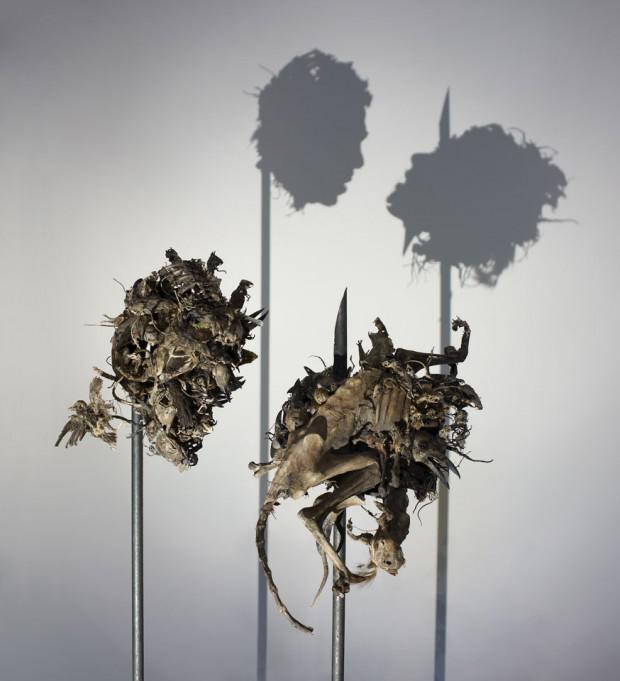
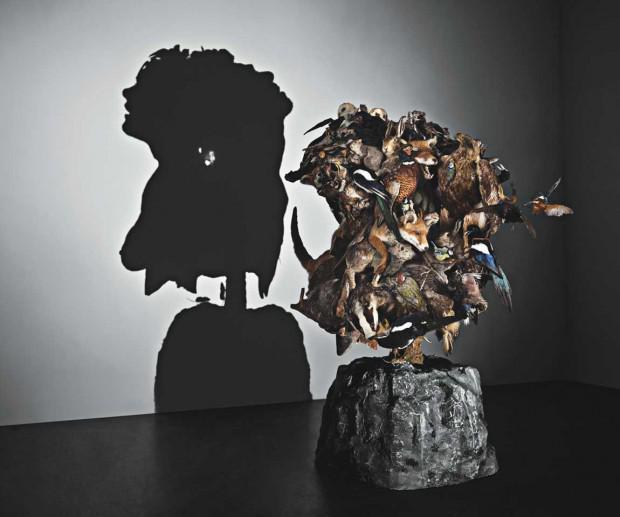
8. "The reverse graffiti"
As for drawing dirty cars, "reverse graffiti" involves the creation of a picture by removing the excess dirt and not by the addition of dye. Artists often use powerful washing plants to remove contaminants from the walls, and in the process create beautiful images. It all started with the artist Paul "Muse" Curtis, who painted his first picture on the black wall of nicotine restaurant where he washed dishes.
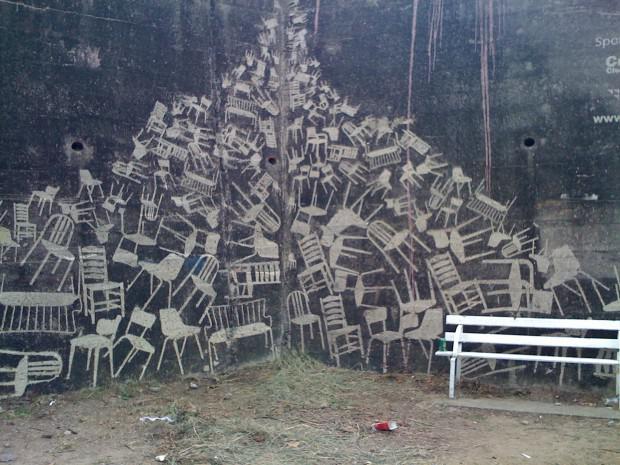
Another notable artist - Ben Long from Britain, he practices more simplified version of the "reverse graffiti" using your own finger to remove dirt from the walls accumulated there because of the exhaust of cars. His drawings are kept at a surprisingly long time, up to six months, provided that they do not wash away the rain or destroyed by vandals.
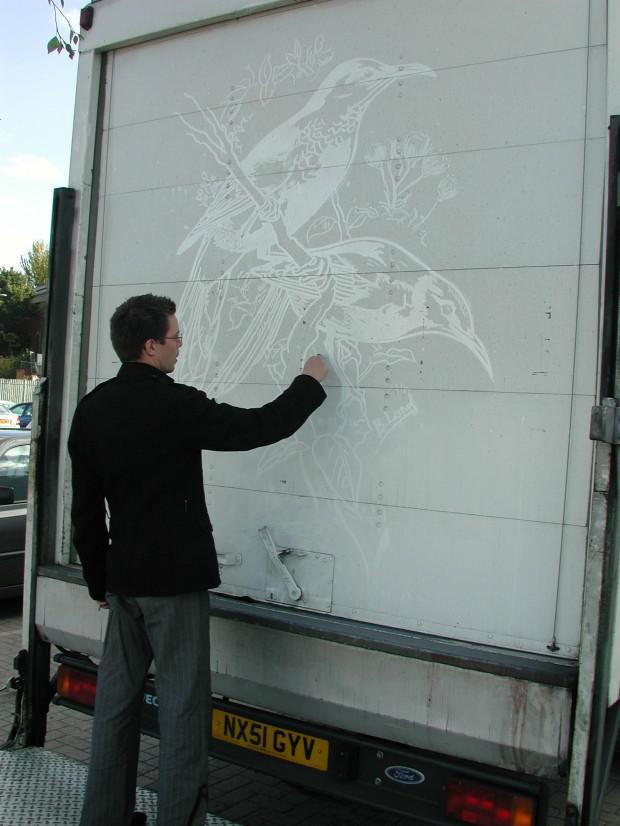
It should be noted that the "reverse graffiti" - quite a controversial art. At the same Curtis, for example, it has had several run-ins with the police, which he compares to "the arrest of a man poking a stick in the sand».
9. Body art illusion
Drawing is not the body for centuries engaged in everything. Even the ancient Egyptians and Mayans tried their hand in this. However, body art illusion raise this ancient practice to a whole new level. As the name suggests, the illusion of body art involves the use of human body as a canvas, but on a canvas that is created is something that can deceive the observer. Illusions on the body can vary from people painted as animals or machines to image holes or wounds, gaping in the body.
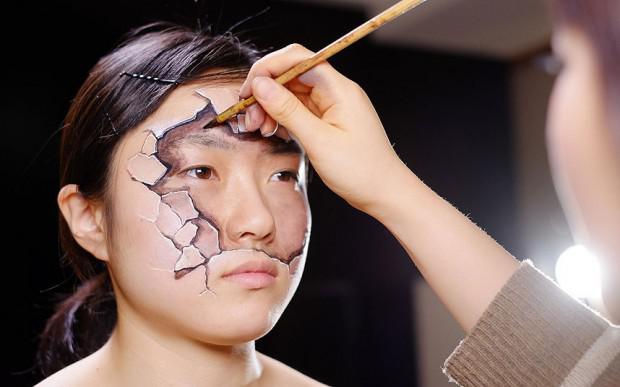
The most prominent representative of this art form is considered to be an artist from Japan Hikaru Cho which is known for its unusual, "cartoon" illusions.
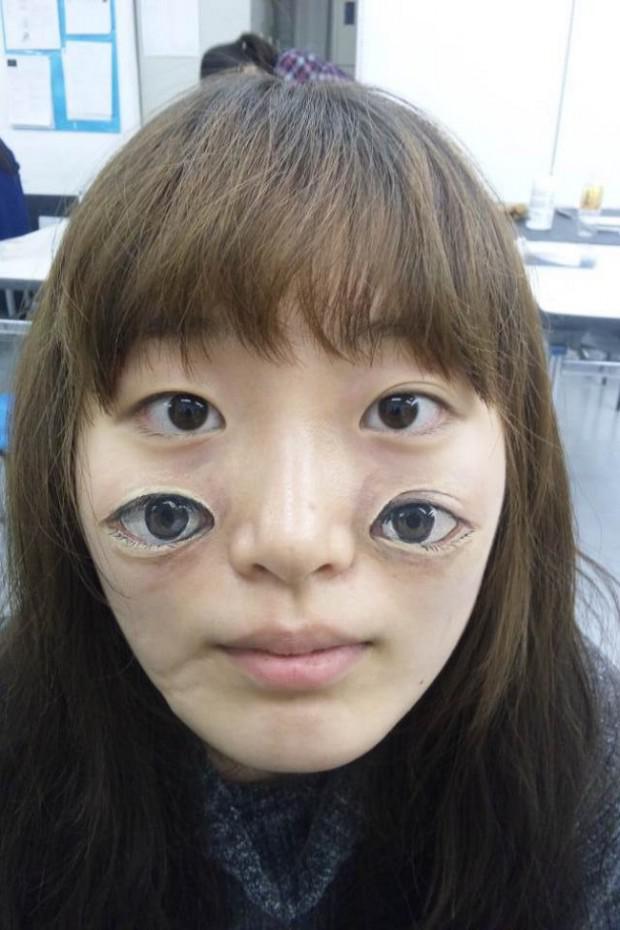
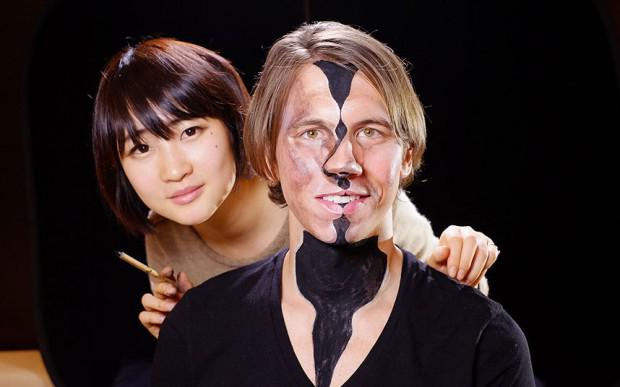
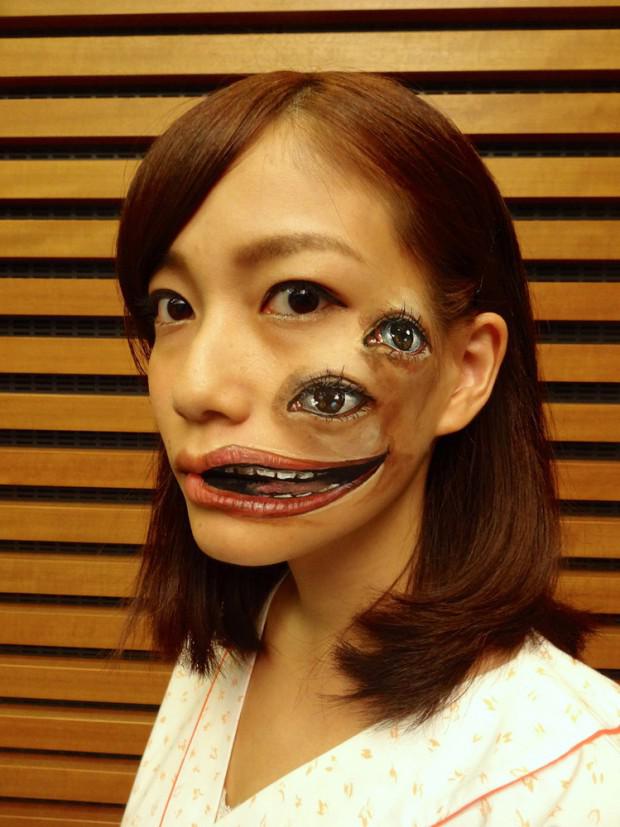
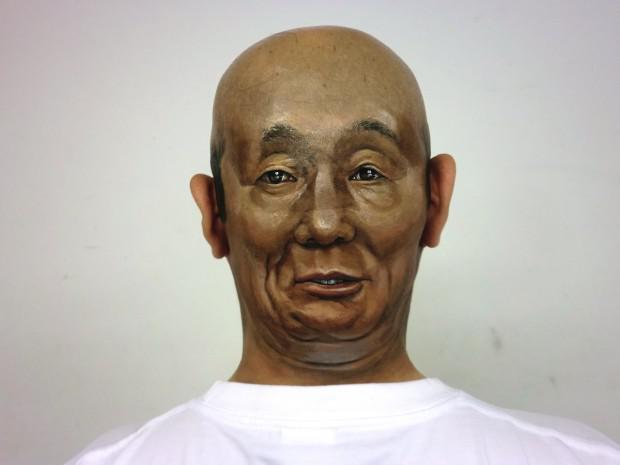
10. Drawing svetom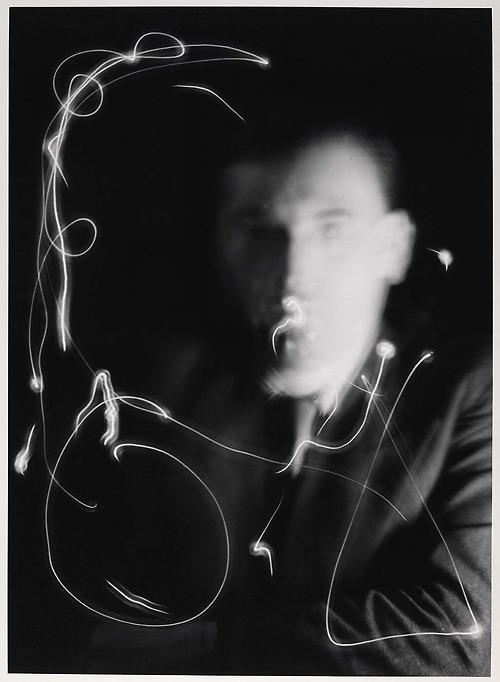
Oddly enough, the very first practice of painting light did not perceive it as art. Frank and Lillian Gilbreth were engaged in the problem of increasing the efficiency of industrial workers. In 1914, the couple began to use light and camera to record some movement of people. Having studied the received light, they were hoping to find ways to make the work of the staff easier and simpler.

And in art, this method was first used in 1935, when the surrealist artist Man Ray used the camera with an open shutter to remove himself standing in a stream of light. For a long time no one knew what kind of light curls depicted in the photo. It was only in 2009, the year it became clear that this is not a set of random light curls, and a mirror image of the signature of the artist.
via factroom.ru

art there almost as long as humans. But the ancient artists involved in cave paintings, could hardly imagine what strange forms can take modern art.
1. anamorphoses
Anamorphosis - a technique for creating images, fully see and understand that you can only look at them from a certain angle, or from a certain location. In some cases, the correct image can only be seen if you look at the mirror image of the painting. One of the earliest examples of anamorphosis demonstrated by Leonardo da Vinci in the 15th century. Other historical examples of this art form appeared in the Renaissance.
For centuries, this technique has evolved. It all started with three-dimensional images produced on plain paper, and gradually came to street art, when artists imitating different holes in the walls, or cracks in the earth.
But the most interesting contemporary example - anamorphic print. Once students Joseph Egan and Hunter S. Thompson, studying graphic design, was applied to the walls in the corridors of his college distorted texts that could be read, but if you look at them from a certain point.






2. Fotorealizm

Since the 60s the movement fotorealistov sought to create an extremely realistic images that were almost indistinguishable from real photos. Copying minute details recorded by the camera, artists fotorealisty sought to create "paintings of life».

Another movement known as the super-realism (or hyper-realism), covers not only painting, but also sculpture. Also, this movement is strongly influenced by modern pop art culture. But while the pop-art images of everyday trying to remove from the context, photorealism in contrast, focuses on images of normal, everyday life, reconstituted as accurately as possible.

The most famous artists-fotorealistam include Richard Estes, Audrey Flack, Chuck Close and the sculptor Douay Hanson. The traffic is very ambiguously perceived by critics, who believe that there is clearly a mechanical skill prevails over the stele and ideas.







3. Drawing on dirty mashinah

Drawing on the dirt accumulated on have not washed the car, too, is considered art, the best representatives of which seek to portray the somewhat more mundane kinds of labels "wash me».

52-year-old graphic designer named Scott Wade became very famous because of its wonderful drawings that he created using the dirt on the glass machines.

But the artist began with the fact that he used as a canvas thick layer of dust on the roads of Texas, on the road, he drew various cartoons and he created them with your own fingers, nails and small twigs.

Currently, he uses special paint brushes, through which creates a wonderfully entertaining and complex picture. Wade gradually began to show in various art exhibitions, as it began to recruit advertisers to he demonstrated his skill at their events.
4. Use of body fluids in iskusstve

This may seem strange, but there are many artists who use their work in a body fluid. Did you have somewhere read about it, but most likely, it was just the tip of the iceberg of this disgusting.

For example, the artist Hermann Nitsch of Austria uses in his work his own urine and blood of a large number of animals. These preferences are having him as a child who came to the Second World War, and these preferences over the years of controversy, it was even a few trials.

Another artist from Brazil named Vinitsius Quesada works with his own blood, and does not use animal blood. His paintings, with painful shades of red, yellow and green, convey very dark, surreal atmosphere.

5. Drawing parts of his own body
Not only artists, using bodily fluids, are currently on the rise. Also gaining popularity use of parts of his own body as a brush. Take, for Tim Patch. He is better known under the pseudonym "Pricasso", which he took after the great Spanish artist Pablo Picasso. And yet it is known that uses its own penis as a brush. This 65-year-old Aussie did not love himself or what limit, so that in addition to the penis is also used to draw the buttocks and scrotum. This unusual case patch has been doing for more than 10 years. And its popularity is growing year by year.
And Kira Ayn Varsedzhi uses its own breasts to draw abstract portraits. While it is often criticized, it is, nevertheless, remains a full-fledged artist who works every day (she also wrote the picture and without the use of a breast).

Other artists in this strange art is Ani K painting language, and Stephen Marmer, a school teacher, painting his own buttocks.


6. Reverse three-dimensional izobrazheniy

While anamorphoses tries to make two-dimensional objects look like three-dimensional, three-dimensional images of the reverse tries to make the three-dimensional object looked like a two-dimensional drawing.

The most prominent artist in this field is Alex Meade from Los Angeles. In its work, Mead uses non-toxic acrylic paint, with which it makes its assistants to be like inanimate two-dimensional picture.

This technique Mead began to develop as early as the year 2008, and it was presented to the public in 2009, the year.

Mead Works, it is usually the man sitting against the wall and painted in such a way that the viewer the illusion that before him - the usual canvas with a conventional portrait. To create such a product, it can take several hours.
Another important figure in this field is Cynthia Greig, artist and photographer from Detroit. Unlike Mead, Greig not use in humans, and ordinary household objects. She covers them with white paint and charcoal to it by the look flat.



7. Shadows in iskusstve

The shadows are fleeting in nature, so it's hard to tell when people first began to use them to create works of art. But today's "shadow artists" reached unprecedented heights in the use of shadows. Artists use a careful positioning of different objects to create beautiful images of shady people, objects or words.

The most notable artists in this area - Kumi Yamashita and Fred Erdekens.




Of course, the shadows a few terrifying reputation, and many "shadow artists' use in their work the theme of horror, devastation and urban blight. This famous Tim Noble and Sue Webster. The most famous of the product called "Dirty white trash", in which a bunch of garbage casts a shadow on the two people who drink and smoke. In another study, visible shadow of a bird, perhaps a shadow raven pecks couple of severed heads impaled on stakes.


8. "The reverse graffiti"

As for drawing dirty cars, "reverse graffiti" involves the creation of a picture by removing the excess dirt and not by the addition of dye. Artists often use powerful washing plants to remove contaminants from the walls, and in the process create beautiful images. It all started with the artist Paul "Muse" Curtis, who painted his first picture on the black wall of nicotine restaurant where he washed dishes.

Another notable artist - Ben Long from Britain, he practices more simplified version of the "reverse graffiti" using your own finger to remove dirt from the walls accumulated there because of the exhaust of cars. His drawings are kept at a surprisingly long time, up to six months, provided that they do not wash away the rain or destroyed by vandals.

It should be noted that the "reverse graffiti" - quite a controversial art. At the same Curtis, for example, it has had several run-ins with the police, which he compares to "the arrest of a man poking a stick in the sand».
9. Body art illusion
Drawing is not the body for centuries engaged in everything. Even the ancient Egyptians and Mayans tried their hand in this. However, body art illusion raise this ancient practice to a whole new level. As the name suggests, the illusion of body art involves the use of human body as a canvas, but on a canvas that is created is something that can deceive the observer. Illusions on the body can vary from people painted as animals or machines to image holes or wounds, gaping in the body.

The most prominent representative of this art form is considered to be an artist from Japan Hikaru Cho which is known for its unusual, "cartoon" illusions.




10. Drawing svetom

Oddly enough, the very first practice of painting light did not perceive it as art. Frank and Lillian Gilbreth were engaged in the problem of increasing the efficiency of industrial workers. In 1914, the couple began to use light and camera to record some movement of people. Having studied the received light, they were hoping to find ways to make the work of the staff easier and simpler.

And in art, this method was first used in 1935, when the surrealist artist Man Ray used the camera with an open shutter to remove himself standing in a stream of light. For a long time no one knew what kind of light curls depicted in the photo. It was only in 2009, the year it became clear that this is not a set of random light curls, and a mirror image of the signature of the artist.
via factroom.ru


